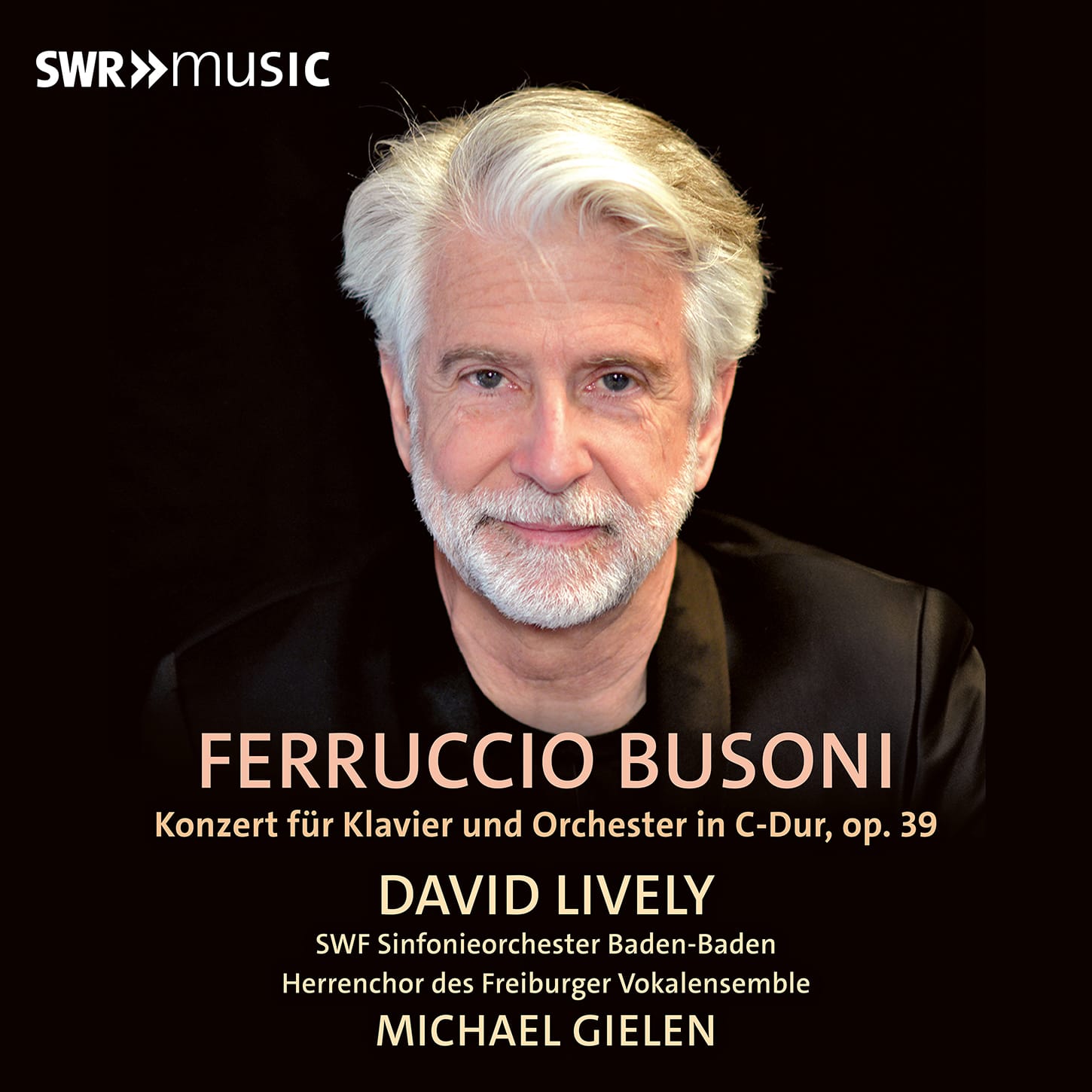
It must surely be the most daunting piano concerto in the repertoire. Ferruccio Busoni’s Piano Concerto in C-Major, BV 247 spreads over 72 minutes in this performance (there are longer: Postnikova takes an eternity); it includes a male chorus in the ;last of its five movements, a setting of words from Adam Oelenschläger’s verse-drama Aladdin.
Composed between 1901 and 1904, it was premiered in Berlin its the composer at the piano and Karl Muck conducting the Berliner Philharmoniker in the Beethovesaal. The piano part is truly staggering in its difficulty, and yet the overall impression is that the piano is co-participant with the orchestra as opposed to spotlight soloist.
Possibly the most famous recorded performance of the Busoni Piano Concerto is that by John Ogdon with the Royal Philharmonic Orchestra under Daniell Ravenaugh, but it sis difficult to resist the unashamed Romantic sweep of an even earlier recording: Noel Mewton-Wood with the BBC Symphony Orchestra and Male Chorus under Sir Thomas Beecham, a 1948 performance from 1948.
The first movement, a “Prologo e Introito,” is itself a quarter of an hour long. I includes a muscular entry in chords up and down the keyboard and harmonic progressions that are straight out of Wagner. The demands on teh pianist ar vast, demanding high finger strength and dynamism. Lively is a fine pianist who fully embraces the challenges; he works with Michael Gielen, a life-long Busoni-it whose understanding and love for the score shines through at every juncture, and the South West German Radio Symphony Orchestra Baden-Baden seem wedded to both Gielen’s beat and intentions :
I find Mewton-Wood more edge-of-the-seat though: this is terrific pianism, and Mewton-Wood has it all from swashbuckling bravura to glittering delicacy (the YouTube below is the whole concerto):
For all the excellence of Hamelin and Gerstein, though, it is to John Ogdon to whom I return every time as the Complet Busonian. His sound is titanic, his technique indefatigable, his command complete. Here’s the first movement in the 1989 EMI remastering (I got to know it via gatefold LPs):
The second movement is a sunny “Pezzo giocoso”; if the concerto’s first part is the stormy skies of High Austro-Germanicism, this is the sunny, Italianate side of Busoni. And her, Lively is perfect; the only criticism is that some of the ascending piano eruptions in response to the buoyant, jubilant brass and wind rhythms ar a tad restrained. Ogdon had his down to a tee, while Hamelin and Gerstein certainly have the legerdemain Busoni requires. I do like how Lively honours Busoni’s clouding of mood in the last couple of minutes:
Kirill Gerstein’s live version from Boston with Sakari Oramo is remarkable in its invocation of diablerie, though, and so trumps Hamelin – whose pianism is indeed jaw-dropping, but not quite at the same level fo resonance:
As to the third movement, “Pezzo serioso,” is dark with more than a hint of a processional about it – and those Wagnerian progressions return to haunt the music’s surface, too. The SWR brass are superb here at lower dynamic levels, presenting themes with super-smooth legato and not a little menace:
Although Ogdon and Revenough are heard in less fine sound, they penetrate straight to the core of this movement, taking it to an altogether different level. The woodwind are chilling; the strings have body (there is something about recordings of this era from HMV that is just superb). This, surely, is the perfect interpretation. The profundity of the music is held intact, despite the performance being over three minutes quicker than Lively/Gielen’s. Initially one might think Ogdon’s rolled chords at 3″17ff a touch dry, but as the music progresses one realises it is an aspect of Busoni’s dark processional, and contrasts maximally with a moment of sudden softening shortly thereafter. And the colours Revenough extracts from the RPO are extraordinary. This is compelling at every level:
The fourth movement is the Tarantella, marked “All’Italiana”. It is Busoni through and through – determined, virtuoso and unmistakably served as an Italian main but with a German side salad. It quotes the Italian folk tune, “E sì, e sì, e sì, che la porteremo”:
The finale includes a setting of Oelenschlager. The most famous piece for solo piano with added chorus is surely Beethoven’s Choral Fantasy. Here’s the much-missed Pollini in that piece, which includes extended passages for soloists as well as full-bodied choral statements. Click here for the choral part.
You can find the text of the final movement as part of the Wikipedia article on this piece here. he Men’s Chorus of the Freiburg Vocal Ensemble is in fine voice here, but perhaps the whole is just lacking in that bit of excitement at the very close.
There is no explicit statement this is a love performance, but the documentation does say the recording was put down in one single day, which is quite an achievement.
A strong contender, then, if not a first choice. Ogdon has an individuality and a resonance with Busoni no other pianist in teh running here has, although Gerstein comes close.
This disc is available at Amazon here. Streaming links below. The Ogdon can be bought here (new for over £40, but second hand for around £7); the Gerstein here, and the Hamelin here.











